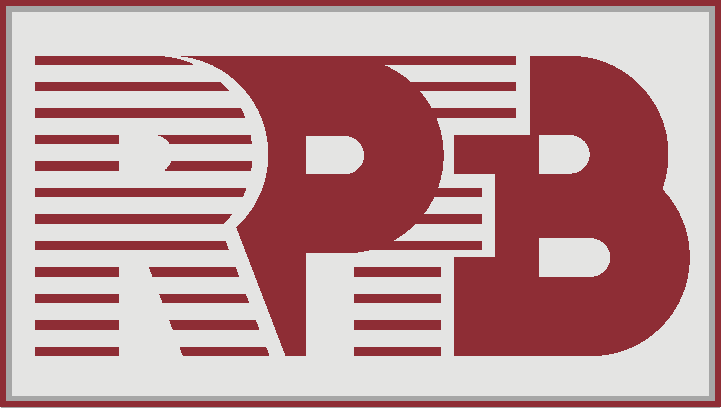Financial modelling for projects on different implementation stages
Financial modeling is required at all stages of the investment project, but the requirements for the financial model at the early stages (when the initiator and/or sponsor determine whether the business idea of further development is worth it) and later stages (where the business model and contract structure are presented for consideration by potential lenders) differ significantly.
The following are the general challenges that help achieve the financial model at various stages:
“Pre-investment” stage
At this stage the main tasks of the model «for Sponsor» are: estimate of basic economics of the project, comparison of various variants of the business model, analysis of possible principles of pricing (including artificial – “cost plus”, “netback” etc.) as well as preliminary credit capacity assessment. This model allows to identify «weak» spots in the economics of the project (if there are any), as well as to choose the optimal business model. In addition, the model can be used to define the terms of entry for partners – as a tool to demonstrate the sustainability of the project, to develop a negotiating position with potential partners, and the development of the provisions of the Shareholders Agreement (taking into account economic targets of each party). At this stage it is possible to assess the economic impact of financial leverage, for which we provide assumptions on the parameters of debt financing, including timing and price conditions, based on the analysis of the market situation and the risk profile of the project. Even though the work on long-term debt financing options begins at the pre-investment stage, large projects tend to spend a significant period of time (from a few months to a year or more) to progress from preparation of feasibility study to making an investment decision and approaching potential lenders. In this case most of the financing terms that were considered at the feasibility study stage may be outdated while the application of some new opportunities and debt instruments offered by potential lenders may not be taken into account. To ensure that the project is still feasible and bankable it is required to update (or develop anew) a financing strategy, which can be implemented by the financial consultant for the project at «after the investment decision» stage – as part of the mandate to raise long-term financing or as a separate task if the initiator of the project for any reason does not want to use the services of specialists to raise «turnkey» financing.
As a rule, model “for sponsor is focused on comparing the various concepts of project implementation; it is not suitable for further work on the development of a financing strategy, because it contains redundant information (introductory data, formulae and macros related to project alternatives) and does not contain the necessary settings to compare different debt instruments and financing sources. Such model is often based on annual periods while debt instruments may include semi-annual, quarterly or monthly periods for calculating interest payments and testing of debt service coverage ratios.
“After investment decision” stage: update and selection of financing strategy
At this stage the model is «analytical» and is used for development and analysis of financial options* for a specific business model chosen by the sponsor at the pre-investment stage. This model is the main instrument to prepare the Financing Options Report (FOR) on the basis of which the sponsors choose the financial option, approve the financing structure & preliminary financial plan and the initial version of Term Sheet; FOR is required to make a decision and move to the stage of organization of financing. The analysis of financial options is made using the criteria that we develop together with our clients, taking into account their goals and objectives – for example, reduction equity injections in the project, reduction of recourse to sponsors, improvement of price conditions, extension of loan tenors, minimization of time for preparation of transaction, increase of share of untied loans, obtaining approval of creditors for early payment of dividends, etc. Often the criteria include integral financial indicators not only of the project, but also of the sponsors (NPV and IRR), qualitative characteristics (for example, the need for guarantees from the sponsors and their economic «cost» – effect on the balance of the parent company), other criteria, depending on the specific project.
As in the case of the model “for sponsor”, this model is «overloaded» with formula, macro and additional data required for comparison of financial options. In order to start the interaction with potential lenders a “bank quality” model is needed. Such model must meet the requirements of potential lenders to the structure and format of the model and usually includes only one financial option – the one that is chosen by sponsor. The model serves as an instrument to negotiate loan agreement.
*The financial option is a comprehensive definition of all the parameters of the debt financing package, including raising funds from one or more sources (Russian and international commercial banks, development institutions, capital markets, etc.), as well as price conditions, maturity and profile of debt instruments (commercial bank loans, development institutions, ECA guarantees, bonds, etc.). When analyzing each option, the system of collaterals and guarantees is evaluated (including the time of withdrawal of guarantees to achieve certain project goals – completion of construction, reaching the full project capacity for production or production, etc.), as well as possible risks to the investor. For each project, depending on its specifics, the option under consideration may take into account drawdown schedule (drawdown of credit limit in “one go” or partial – to cover project costs over extended period of time, if the project is implemented in several phases or assumes extended investment stage), the need for interim funding (short-term bridge-credits raised under the guarantees of sponsors), the time to raise long-term financing (before or after completion of construction, etc.). At the same time, the model is the basis for the development of the financial plan, taking into account the target Debt/Equity ratio and the optimal set of debt instruments, structuring the transaction (identification of project risks and ways of covering them) as well as estimating the impact of financing on the economic performance of the project for each option.
“Post-investment decision” stage: interaction with selected creditor or creditor syndicate
Interaction with a potential creditor is carried out on the basis of an information package, which includes basic information about the Sponsor, as well as an information memorandum and a financial model. At this stage, the financial model should describe the business model chosen by the Sponsor and its long-term financing strategy and meet the requirements of potential lenders (different lenders may have different requirements to format, detail, transparency, and the calculation of key metrics in the financial model). It is considered optimal to initiate a dialogue with lenders using a clear and easy to audit model, which allows faster review of the project and negotiations. From time perspective, it is faster and easier to convert the model from «analytical» to «banking quality» model by removing redundant functions and irrelevant scenarios (alternative options of the financing strategy) rather than to develop it from scratch, however, the model’s design should allow such conversion. The task of the model at this stage is to demonstrate the project’s ability to service the debt, taking into account the project’s applicable DSCR levels/loan pricing parameters offered by potential lenders, and perform sensitivity analysis on a standard set of parameters for banks.
This model is a key tool for structuring a transaction to improve the terms and conditions of project finance. It harmonizes financial ratios, drawdown period and grace period, debt repayment profile (for example, it can be used to develop a special profile of debt repayment to take into account the «seasonality» of the project or other features that lead to uneven revenue levels over a long period of time) and other conditions of credit documentation.
“Support” stage
The frequent requirement of credit documentation is regular update of the financial model with relevant historical and updated forecasts to verify the financial ratios: some creditors will not allow the project to distribute dividends if any covenants have been violated or the debt coverage ratio is not sufficiently high. Failure to update the financial model within the prescribed time frame may result in fines or penalties on the part of the creditor.
Since the input data for the financial model comes from several sources (usually it is the accounting statements and the project forecast budget / business plan), main task for the model at this stage is to be transparent (so all the input data can be verified and traced back to the source) and easy to use. For these purposes, the «bank quality» model may include an interface that can be added either at the stage of preparation for the transaction, or shortly before the signing of the loan agreement. In this case, the interface is developed together with the client’s employees (and agreed with representatives of the lender, if necessary) and integrated into the financial model. The interface comes with Guide or Instruction on financial model.
For more information on the principles of development of financial models, see the article «Financial modeling: principles of development»


